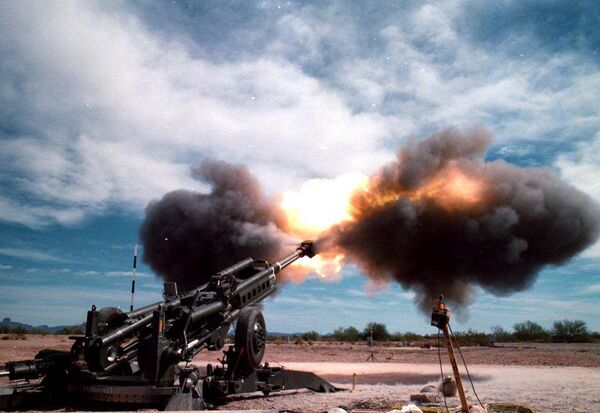
An M777 155 mm Howitzer fires at Yuma Proving Ground's Kofa Firing Range. (US Army )
US Army officials and industry counterparts are preparing for a so-called ‘soft catch' test and demonstration of a new Assured Position, Navigation and Timing (APNT) capability, which could play a key role in advancing the ground service's Precision Long Range Fires initiative.
Programme officials from US Army Combat Capabilities Development Command (DEVCOM) and CAES, a Northern Virginia-based company specialising in advanced radio frequency (RF) technologies, will evaluate the survivability and mission validity of the company's Precision Strike Sensor Core APNT system.
“We're actually going to integrate (the system) with a round and fire it, to validate the survivability,” during the test scheduled to take place at Picatinny Arsenal in New Jersey, CAES director of engineering Brian Hetsko said.
If successful, programme officials at CAES plan to proceed with future live fire and captive carry demonstrations of the system at Yuma Proving Ground in Arizona later in 2024, Hetsko told Janes during a 20 May interview.
As designed, the Precision Strike Sensor Core consists of a sensor and programmable transceiver, the former of which provides angle of arrival data – in both azimuth and elevation – of a given precision long-range fires weapons system, Hetsko said.
That sensor data is then relayed to the programmable transceiver, which then provides the range to a given target, he said. “The combination of azimuth, elevation, and range provide a relative position of the platform,” Hetsko added.
Looking to read the full article?
Gain unlimited access to Janes news and more...
